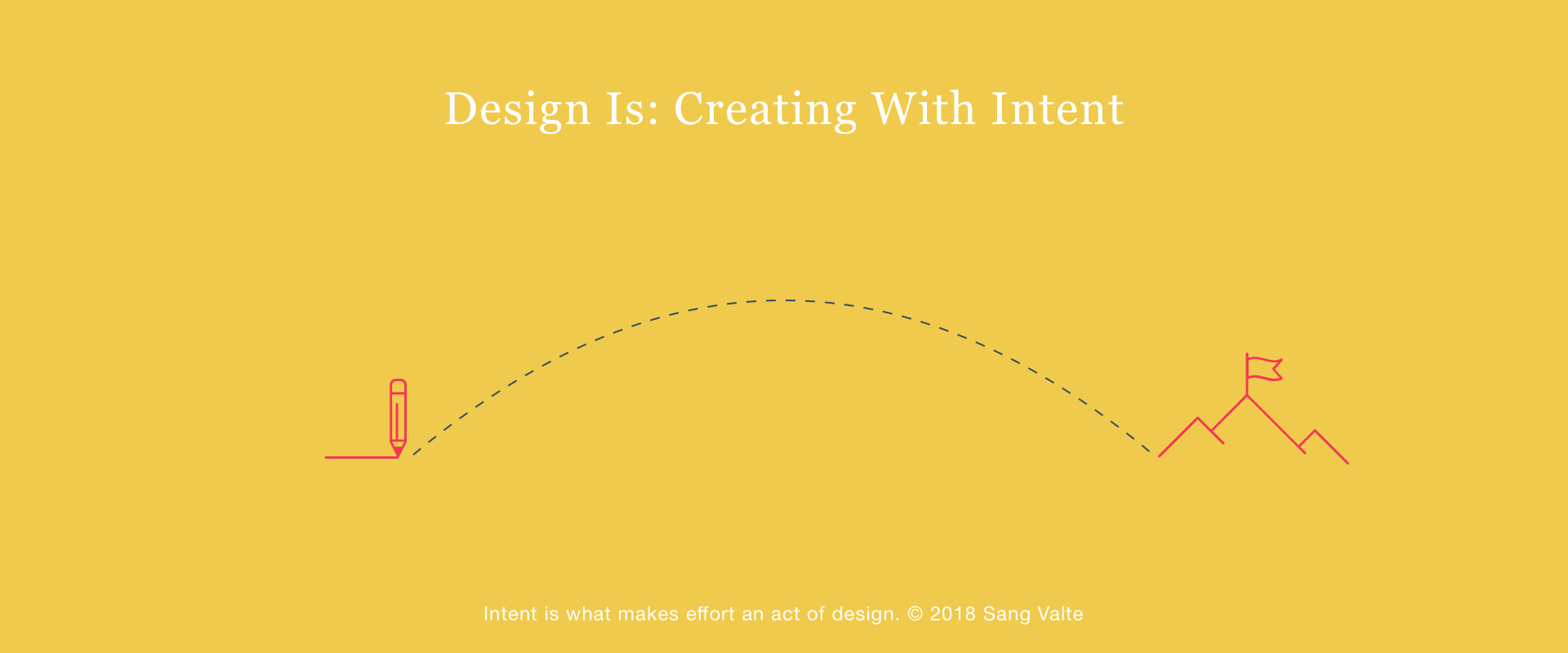A designer for nearly half my life, design in its various expressions has taken me around the world. In the process, my role and scope of design has changed dramatically. Like the design industry itself, I’ve grown and matured in my understanding and application of it.
Here’s the story of how I arrived at my current paradigm.

Design Is: To Make Things Look Good
I’ve always liked doodling though I wasn’t particularly good at drawing or sketching. When I learned how to use the computer, I immediately saw it as an avenue to designing for myself. From a small town in northeast India with limited access to technology, it’s no surprise I have no formal design background. As a self-taught designer, I learned by imitating signboards, posters and magazine spreads. In short, the visual aspect of design was all I knew.
Like many designers in the early 2000s, my first side gigs were in desktop publishing. I designed bookmarks, album art, banners, posters, etc., for my local community.
As a print designer, the questions I asked were simple and straightforward. “Who is the audience?” “How can I appeal to their senses?” And more importantly, “Do I like how this looks?” The aim of my designs were to: inform, invite, motivate, inspire action, or some combination of those four. My design efforts focused on evoking an emotional response. Primarily, as David Carson stated in his TED talk, “the message people receive before they begin to read.”
In general, my desired outcome was simple — I wanted to make things look good.

Design Is: Communication
Transitioning from print design to web design required a mindshift. Considering myriad fundamental differences between the two mediums, I had no choice but learn a new way of thinking about design.
In print design, the conversation is one way— from designer to audience. The end product doesn’t respond to the audience’s feedback. Neither is there any avenue for user input. Conversely, web design is a two way conversation and inherently interactive. It requires user input. The product must respond and provide feedback as necessary.
Immersed in the world of interaction design, I learned that design is more than making things look good. While good design must appeal to the senses, it must also account for thought and cognition. Design should communicate what actions are possible, what’s happening, and what’s about to happen. This happens through the visual, audio, or tactile. In short, “good design [is] good communication.” — The Design of Everyday Things
As a designer, my desired outcome was to communicate well.

Design Is: How Things Work
One day I realized I’d begun designing tools to solve problems; tools that people use to meet their needs. I can’t remember what triggered the realization. Most likely, it was experience coupled with plenty of mistakes, influence from different thought leaders, and a side of Steve Jobs.
People use digital products as tools to do life. They buy a new pair of shoes, reserve a table at their favorite restaurant, book their next summer holiday and so much more. My job as a designer is to create tools that make it easy for people to do what they need to do when they need to do it. Design has become less so about how things look and more so about how things work.
My desired outcome was to make things that work well.

Design Is: Creating With Intent
When my role shifted to leadership, the scope of my work changed yet again. Instead of designing task flows and wireframes, I found myself creating design processes. In place of pushing pixels, I designed frameworks and put emphasis on outcomes rather than outputs. With few tangible deliverables, thinking is work became my new reality.
A designer at heart, and not wanting to call myself anything else, I set out on a quest to re-define what it means to design. When I came across Paul Ralph and Yair Wand’s conceptual model of design, it resonated. They defined design as:
Design
(noun) a specification of an object, manifested by an agent, intended to accomplish goals, in a particular environment, using a set of primitive components, satisfying a set of requirements, subject to constraints;
(verb, transitive) to create a design, in an environment (where the designer operates)
Paul Ralph and Yair Wand’s conceptual model of design
My scope and understanding of design transformed. I felt their definition made perfect sense and was as complete as it could be. But, I wanted something simple. Something like the theory of everything, but the design version. After much thought and many discussions, I boiled their definition down to the one common thread I found in my own design efforts: whether making things look good or work well, I always had intent. This, I believe, is what made and makes my efforts an act of design.
Design
(verb) to create something with intent.
How do you define design or what’s your favorite definition?
